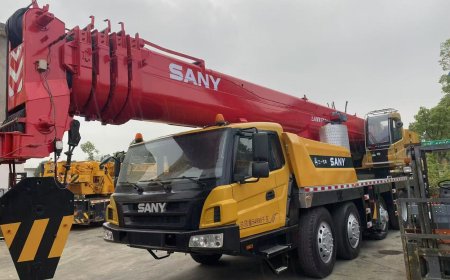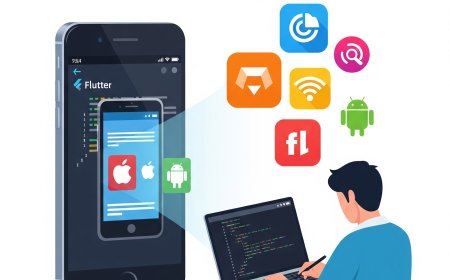Revolutionizing Filmmaking: The Power of Virtual Production Studios and Software
In the ever-evolving landscape of filmmaking, virtual production has emerged as a transformative force, redefining how stories are brought to life.
In the ever-evolving landscape of filmmaking, virtual production has emerged as a transformative force, redefining how stories are brought to life. By seamlessly blending physical and digital worlds, virtual production studios and software empower creators to craft immersive, visually stunning content with unprecedented efficiency and creativity. This guest post explores the rise of virtual production, the role of cutting-edge virtual production studios and software, and their impact on the future of filmmaking, broadcasting, and beyond.
What is Virtual Production?
Virtual production is a filmmaking technique that combines live-action footage with real-time computer-generated imagery (CGI) to create dynamic, photorealistic environments. Unlike traditional production, which often relies on green screens and extensive post-production, virtual production integrates visual effects (VFX) into the filming process. This is achieved through technologies like LED walls, real-time rendering engines, and advanced camera tracking systems, enabling filmmakers to visualize and capture final-pixel visuals directly on set.
The term "virtual production" encompasses various techniques, including:
-
In-Camera Visual Effects (ICVFX): Using LED walls to display virtual backgrounds that sync with camera movements, creating realistic, in-camera visuals.
-
Augmented Reality (AR): Overlaying digital elements onto live footage in real time.
-
Extended Reality (XR): Combining virtual and physical environments for immersive storytelling.
-
Virtual Studios: Controlled environments where green screens or LED walls are used to create dynamic sets.
This innovative approach, popularized by productions like The Mandalorian, has revolutionized filmmaking by reducing reliance on location shooting, streamlining workflows, and enhancing creative control.
The Role of Virtual Production Studios
Virtual production studios are purpose-built facilities equipped with state-of-the-art technology to support the creation of immersive digital environments. These studios typically feature large LED walls, high-performance computers, and advanced camera tracking systems to deliver real-time visuals. Heres how theyre transforming the industry:
1. Immersive Environments with LED Walls
LED walls, often referred to as "the volume," are the cornerstone of modern virtual production studios. These massive, high-resolution screens display real-time virtual sets powered by game engines like Unreal Engine. Unlike green screens, LED walls provide realistic lighting and reflections, allowing actors and crew to interact with the environment naturally. For example, 80sixs Virtual Production Studios in the UK leverage ROE Visual LED stages and Brompton Technologys Tessera system for ultra-low latency and 10-bit HDR calibration, ensuring cinematic quality.
2. Cost and Time Efficiency
Virtual production studios eliminate the need for expensive location shoots by replicating diverse environments in a controlled setting. A single studio can transform into a futuristic city, a desert wasteland, or an alien planet in minutes, saving time and reducing carbon footprints. Sonys Crystal LED VERONA panels, for instance, offer high brightness and a wide color gamut, enabling flexible setups with minimal downtime.
3. Enhanced Collaboration
Virtual production studios foster collaboration across departments. Directors, cinematographers, and VFX artists can visualize scenes in real time, making creative decisions on set rather than in post-production. Studios like Vu Technologies Vu One integrate hardware and software into a turnkey solution, streamlining workflows with tools like Scene Forge and Vu.ai for content creation.
4. Accessibility for All Creators
While virtual production was once reserved for high-budget productions, studios like Leopixel Studios in Toronto are making it accessible to smaller teams, including bloggers and indie filmmakers, by offering green screen-based virtual production setups powered by Aximmetry and Unreal Engine. This democratization is expanding the creative possibilities for a broader range of storytellers.
The Power of Virtual Production Software
Virtual production software is the backbone of these studios, enabling real-time rendering, seamless integration, and creative flexibility. Below are some of the leading software platforms driving the virtual production revolution:
1. Unreal Engine
Unreal Engine, developed by Epic Games, is the industry standard for virtual production. Its real-time rendering capabilities allow filmmakers to create photorealistic environments and visualize changes instantly. With a node-based workflow, expansive asset library, and compatibility with plugins, Unreal Engine powers studios worldwide, from Disneys The Lion King to The Mandalorian. Its Enterprise Program license starts at $1,850 per seat annually, making it a robust yet accessible tool.
2. Pixotope
Pixotope offers an intuitive suite for AR, XR, and virtual studio production. Its tools streamline tracking, compositing, and virtual set creation, integrating seamlessly with Unreal Engine. Pixotopes template-based workflows make it ideal for broadcasters and live event producers, enabling rapid deployment of immersive visuals. The softwares Education Program also supports the next generation of creators by providing access to cutting-edge tools.
3. Aximmetry
Aximmetry is a versatile platform for real-time 3D graphics and virtual studio production. Its node-based editor and advanced chroma keying technology make it a favorite for budget-conscious studios. Aximmetry DE, which incorporates Unreal Engine, offers a dual-engine approach for flexibility in broadcast and film applications. The Studio Edition provides a free, watermarked license for non-commercial use, lowering the barrier to entry.
4. Disguise
Disguises media servers and software platform are designed for complex virtual production workflows. Supporting 2D, 2.5D, 3D, and XR formats, Disguise powers studios like Pier59 in Manhattan, which boasts a 360 LED media wall. Its scalable solutions ensure pixel-perfect results, making it a go-to for high-end productions.
5. Sonys Virtual Production Tool Set
Sonys Virtual Production Tool Set integrates its VENICE and BURANO cameras with Crystal LED panels and Unreal Engine plugins. Features like the Color Calibrator and Moire? Alert ensure precise color reproduction and artifact-free visuals, enhancing the quality of in-camera VFX. This end-to-end solution is tailored for cinematic excellence.
Benefits of Virtual Production
The combination of virtual production studios and software offers numerous advantages that are reshaping the filmmaking landscape:
1. Real-Time Visualization
Virtual production allows directors and cinematographers to see final visuals during filming, reducing guesswork and enabling immediate adjustments. This is particularly valuable for complex VFX shots, as seen in The Mandalorian, where ILMs StageCraft technology revolutionized on-set workflows.
2. Streamlined Post-Production
By capturing final-pixel visuals in-camera, virtual production reduces the need for extensive post-production, saving time and budget. FuseFXs integration of game engines into traditional VFX pipelines exemplifies how real-time rendering accelerates production.
3. Enhanced Performances
Actors benefit from immersive environments that replace green screens with dynamic backdrops. This allows for more natural performances, as they can interact with virtual sets and CGI characters in real time. Monesha Madison Lever, a freelance producer, notes that actors prefer seeing the world theyre interacting with, enhancing their performances.
4. Sustainability
Virtual production minimizes the need for location shooting, reducing travel-related carbon emissions. Sonys comparison of GHG emissions highlights how virtual production can lower a productions environmental impact.
5. Creative Freedom
With virtual production, the only limit is imagination. Filmmakers can create impossible locations, manipulate time of day, or integrate digital extras seamlessly. FuseFXs photogrammetry and volumetric pipelines, for example, populate virtual sets with thousands of digital extras, creating lived-in environments.
Challenges and Considerations
Despite its advantages, virtual production comes with challenges:
-
Learning Curve: The technology requires skilled Unreal Engine artists and technical directors, who are in short supply. Education programs like Pixotopes and Perforce U College are addressing this gap.
-
Initial Costs: Setting up a virtual production studio can be expensive, with costs ranging from $2 million to $7 million for large-scale setups. However, turnkey solutions like Vu One are making it more affordable.
-
Technical Complexity: Coordinating LED walls, camera tracking, and software requires expertise. System integrators can simplify logistics, as noted in Reddit discussions.
The Future of Virtual Production
The future of virtual production is bright, with advancements in hardware and software continuing to push boundaries. Innovations like Sonys OCELLUS camera tracking system and Vus mobile studios are making the technology more accessible and versatile. As more studios adopt virtual production, the industry is shifting from fix it in post to fix it in pre, emphasizing pre-production planning and real-time iteration.
Education will play a critical role in scaling virtual production. Initiatives like Pixotopes Education Program and Perforces free courses are training the next generation of creators, ensuring the technology becomes a staple in filmmaking.
Conclusion
Virtual production studios and software are revolutionizing filmmaking by merging creativity with cutting-edge technology. From LED walls to real-time rendering engines, these tools empower creators to craft immersive worlds, streamline workflows, and reduce costs. Whether youre a Hollywood filmmaker or an indie creator, virtual production offers endless possibilities to bring your vision to life. As the industry continues to evolve, embracing virtual production will be key to staying at the forefront of storytelling innovation.
To explore virtual production for your next project, connect with leading studios like Vu, 80six, or Leopixel, and leverage software like Unreal Engine, Pixotope, or Aximmetry to unlock a new era of filmmaking.






































